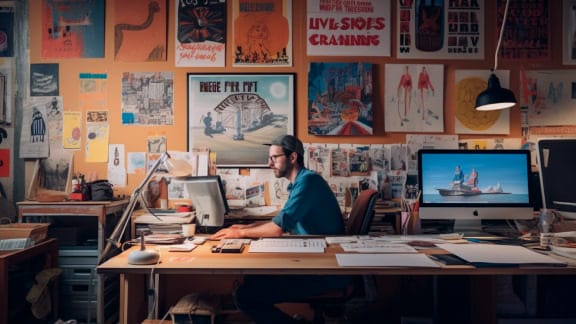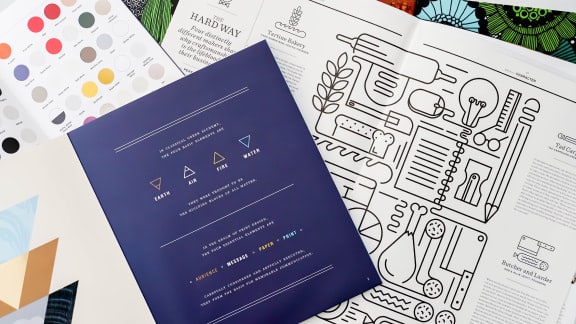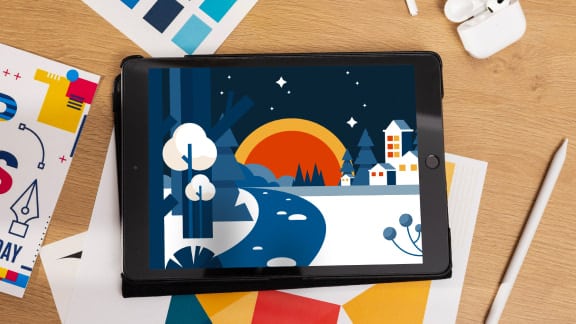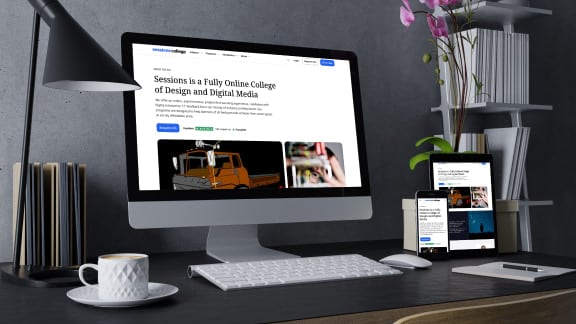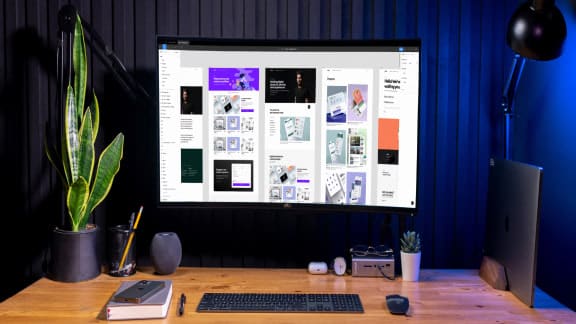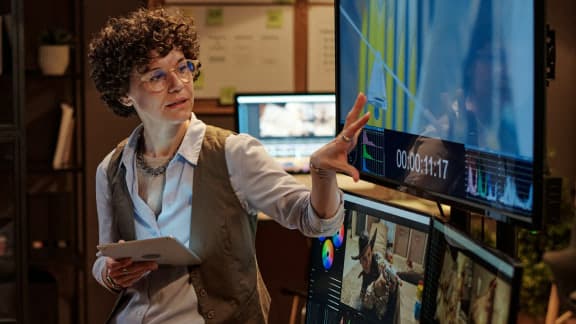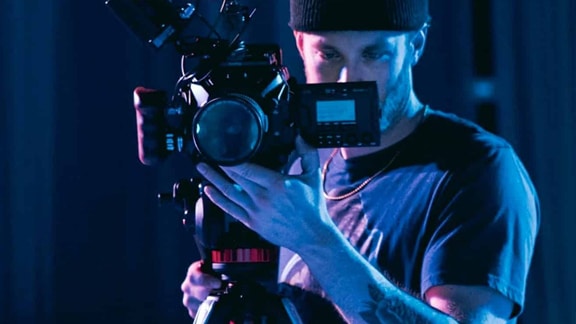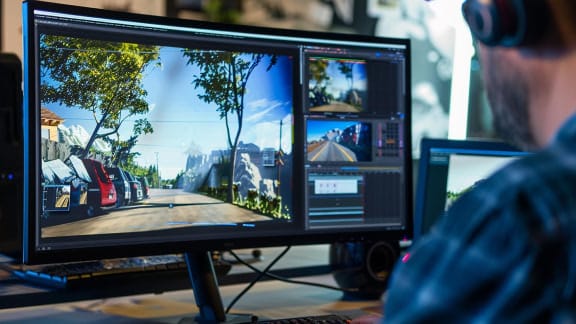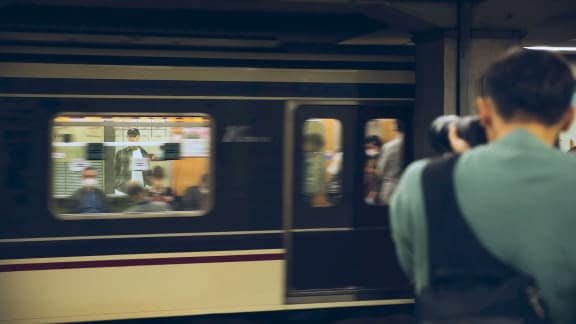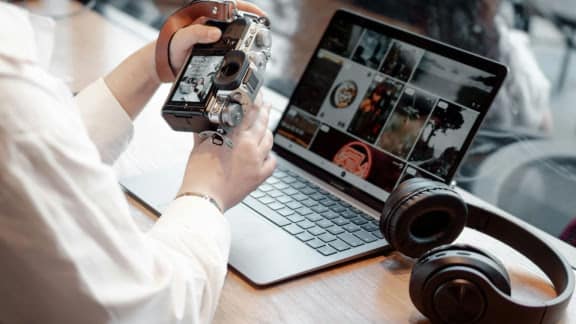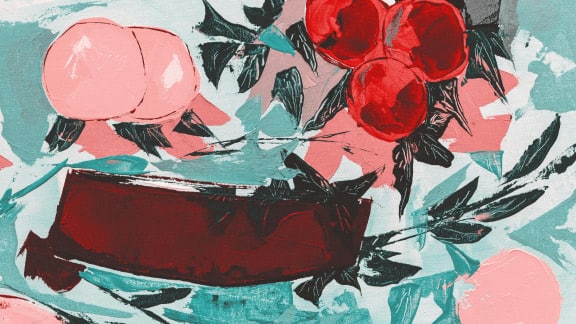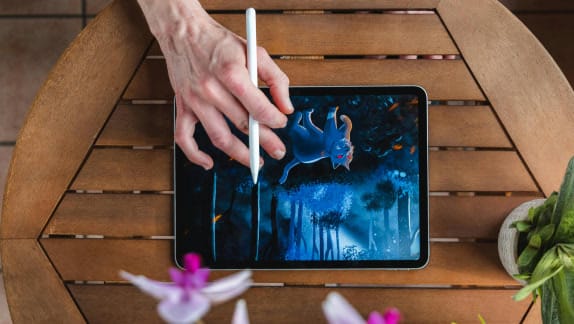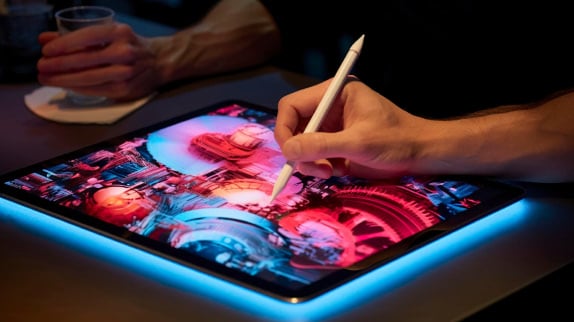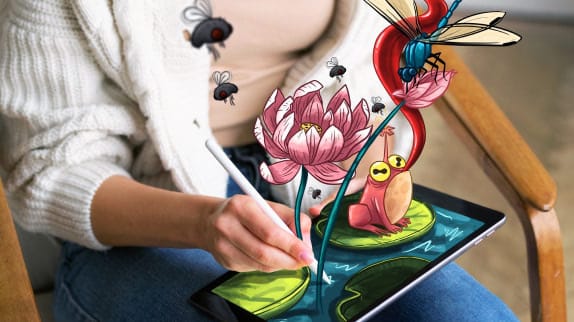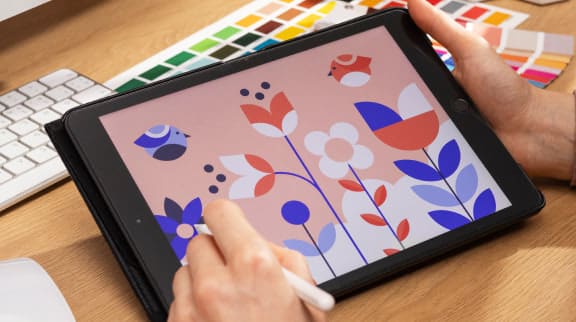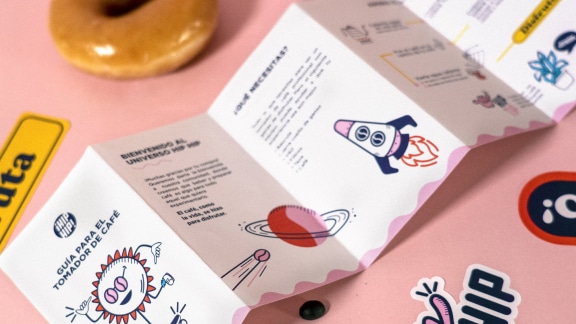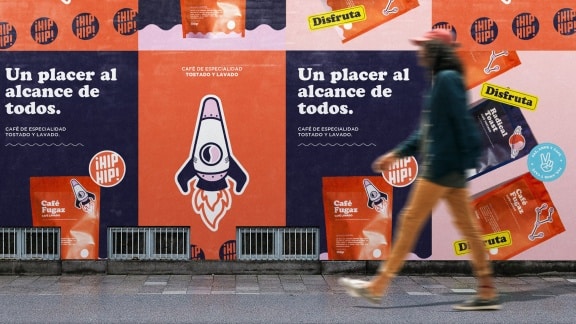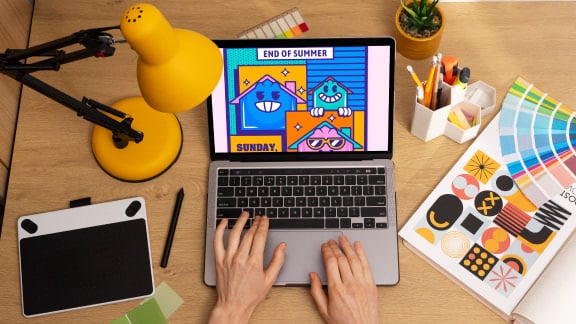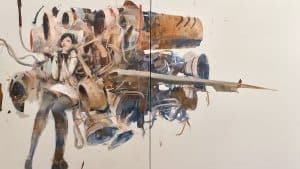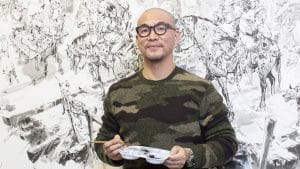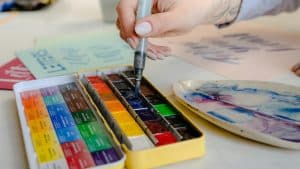Illustration Trends 2025: What’s Upending Design This Year
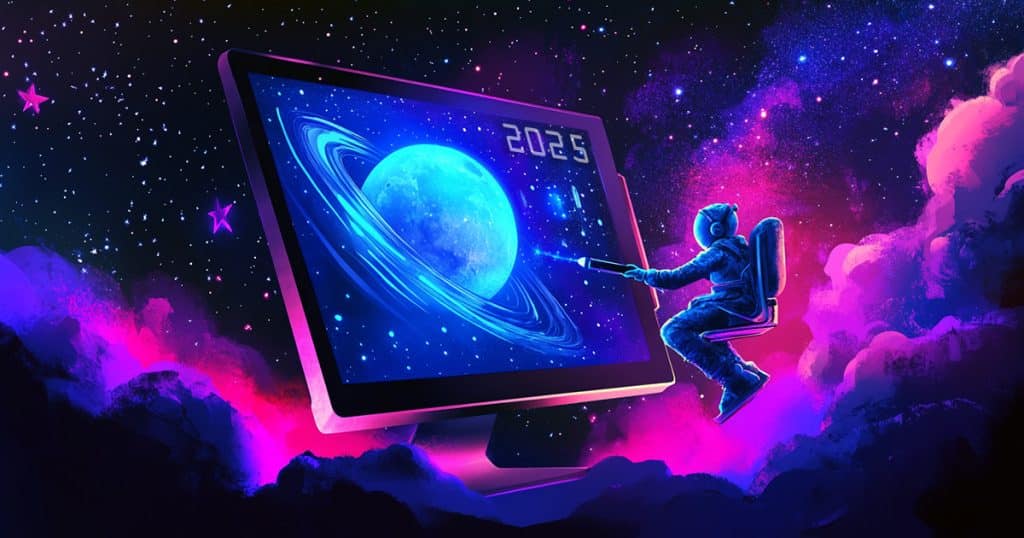
When French painter Paul Delaroche saw his first daguerreotype photograph in 1839, he declared the art of painting dead. We’re living through a similar cultural moment today with AI. If you doomscroll illustrator forums on Reddit or DeviantArt, you might conclude that the artistic sky is falling.
But don’t forget that painting as an artform didn’t die back then. In fact, photography spawned impressionism, among several other exciting disciplines. Brilliant artists like Picasso and Magritte rebelled against the hyper-realism of the new silver-plated image capture. Their rebellion unearthed rich new veins of valuable expression.
And AI isn’t the only game in town, when it comes to influences on 2025’s top illustration trends. Today’s artistic minds are having just as much fun doing brilliant work as ever.
Here is our prediction for the top ten trends in illustration in 2025.
#1. Retro-Futurism
In 2011, Italian science fiction illustrator Franco Brambilla reimagined classic postcards. He decided to try adding futuristic elements to a mid-20th-century style, and his “Invading the Vintage” series was born.
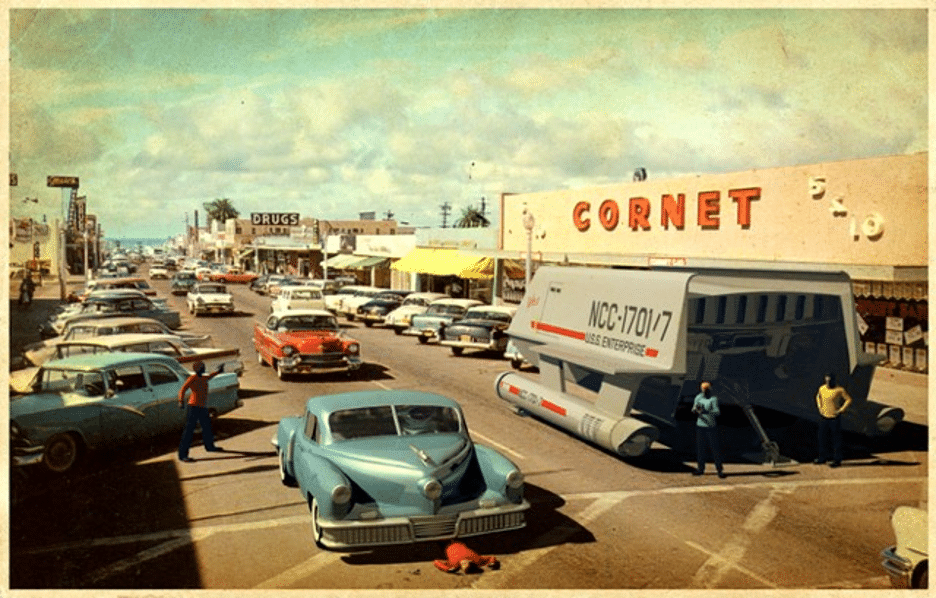
Source: francobrambilla.com
It instantly caught fire with audiences, sparking a broader interest in retro-futurism that continues to inspire. We think Brambilla’s forward (backward?)-thinking brainchild will gain even more traction throughout 2025. Artists and designers will continue to uproot the fences that separate excitement for the future from nostalgia for a better time.
Characteristics of Retro-Futurism
- Nostalgic aesthetics
- Futuristic technology
- Bold color palettes
- Geometric patterns
Examples of Retro-Futurism in Modern Media
- Film: The Incredibles series
- Television: Futurama
- Art: Simon Stålenhag’s paintings
- Fashion: A$AP Rocky’s recent collections
#2. Eco-Conscious Imagery
Patagonia launched its “Buy Less, Demand More” campaign in 2021. But they didn’t just use it to sell puffy coats. They set a new standard for eco-conscious imagery. Their minimalist designs ditched glitz and polish in favor of stark, no-frills reality.
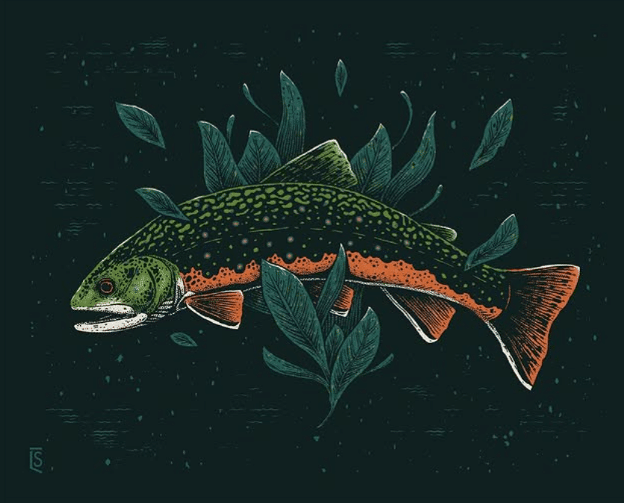
Source: loganschmittillustration
The anti-famous look struck a nerve with eco-minded consumers, catching on like NFTs and Insta filters. If anything, the environment weighs even more heavily on our minds today. In 2025, look for eco-conscious design to thrive as audiences continue to hold sustainability near and dear.
Characteristics of Eco-Conscious Imagery
- Natural elements
- Sustainable materials
- Muted color palettes
- Minimalistic design
Examples of Eco-Conscious Imagery in Modern Media
- Branding: Patagonia’s campaigns
- Advertising: IKEA’s eco-line visuals
- Packaging: Seventh Generation products
- Digital Art: Beeple’s nature series
#3. AI-Generated Surrealism

Source: https://sofiacrespo.com/
The artist Sofia Crespo started using AI to generate biomorphic dreamscapes in 2018. Her work tore down the walls between human imagination and machine learning. Her otherworldly pieces fueled a growing fascination with AI surrealism. It inspired a new wave of digital artists to experiment in new ways. In 2025, expect AI surrealist illustration to be even more refined and widespread. As AI tools evolve, illustrators will use them to create hyper-detailed compositions that push the limits of perception.
Characteristics of AI-Generated Surrealism
- Dreamlike imagery
- AI-assisted detailing
- Organic and synthetic fusion
- High contrast and saturation
Examples of AI-Generated Surrealism in Modern Media
- Art: Sofia Crespo’s AI-generated biodiversity series
- Editorial: The Atlantic’s AI-assisted concept covers
- Advertising: Nike campaigns blending sports imagery with surreal AI landscapes
- Music Videos: Aphex Twin visuals featuring AI-generated distortions
#4. Mixed Media Collage
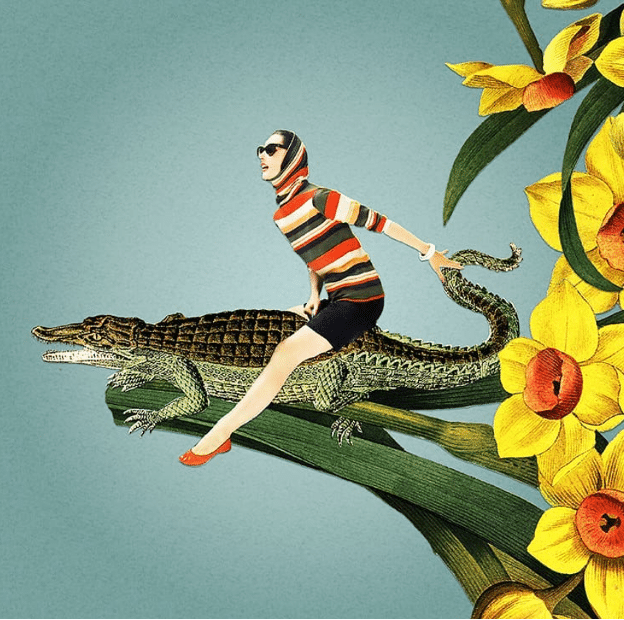
Source: Eugenia Loli Instagram
Illustrator Eugenia Loli broke new ground with her surreal mixed media collages in 2010. She used vintage photography and found objects to create strong, story-driven pieces. Her unique style took off like the banana on a Falcon 9. Soon, brands and editorial publications were stealing her layered look and bending it to their own ends. Designers and artists are always looking for new ways to tickle audiences. Mixed media collage offers a playful, experimental approach that’s perfect for telling complex stories. It’s a trend we’ll see in everything from album covers to ad campaigns this year.
Characteristics of Mixed Media Collage
- Layered visuals
- Eclectic styles
- Experimental compositions
- Handmade feel
Examples of Mixed Media Collage in Modern Media
- Art: Eugenia Loli’s works
- Editorial: The New York Times illustrations
- Advertising: Nike campaigns
- Album Covers: Tame Impala’s visuals
#5. Playful 3D Illustrations

Source: buck_design
Design studio Buck helped kick off the playful 3D illustration trend with their work for Slack. Their animated characters made the interface feel alive, transforming digital interactions into memorable experiences. The new style has since popped off in e-commerce and app design. As brands continue to vie for consumer attention, playful 3D illustrations are an on-fleek solution. We’ll be seeing more of this illustration trend in websites and ads in 2025, bringing a refreshing touch of joy to visual storytelling.
Characteristics of Playful 3D Illustrations
- Depth and texture
- Whimsical characters
- Soft color palettes
- Dynamic movement
Examples of Playful 3D Illustrations in Modern Media
- Branding: Slack’s interface elements
- E-commerce: Shopify’s product visuals
- App Design: Duolingo’s animations
- Advertising: Coca-Cola’s digital ads
#6. AI-Assisted Illustrations
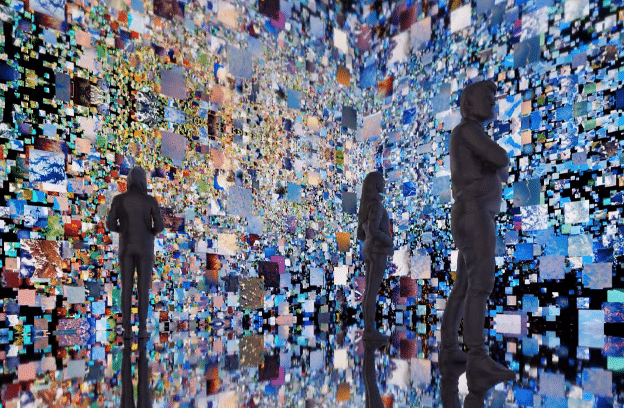
Source: refikanadol.com
Artist Refik Anadol pioneered a new kind of AI-assisted illustration with his “Machine Hallucinations” series. He fed thousands of images to algorithms to create immersive, dreamlike visuals. As AI tech continues to evolve, more artists will integrate machine learning into their process. Whether for concept generation or rapid prototyping, AI is changing how we create. Although most artists consider AI art unethical, 65% are using it to brainstorm new ideas. AI is reshaping illustration trends for 2025.
Characteristics of AI-Assisted Illustrations
- Generative art
- Enhanced details
- Style adaptation
- Rapid prototyping
Examples of AI-Assisted Illustrations in Modern Media
- Art: Refik Anadol’s Machine Hallucinations
- Editorial: The Atlantic’s AI-generated visuals
- Branding: Nestlé’s ad campaigns
- Concept Art: Ubisoft’s video game development
#7. Hyper-Realistic 3D Illustration
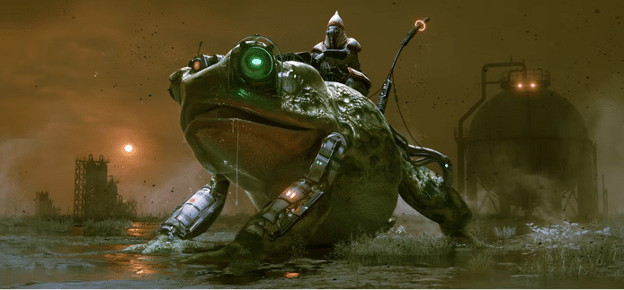
Source: beeple-crap.com
Love it or hate it, digital sculptor Beeple took a digital wrecking ball 3D illustration with ultra-detailed renders that feel almost photographic. His work blurs the line between illustration and reality. It sets the stage for a surge in hyper-realistic 3D styles. As 3D rendering software improves in 2025, this illustration trend will dominate visual storytelling. It creates immersive, tangible experiences that drop jaws and switch on minds.
Characteristics of Hyper-Realistic 3D Illustration
- Lifelike textures
- Dramatic lighting
- Near-photographic detail
- Dynamic posing
Examples of Hyper-Realistic 3D Illustration in Modern Media
- Gaming: Character models in Unreal Engine 5
- Film & TV: CGI-rendered characters in Disney+ productions
- Advertising: Luxury product campaigns featuring ultra-detailed renders
- Editorial: TIME Magazine covers with hyper-realistic digital portraits
#8. Handcrafted and Organic Aesthetics
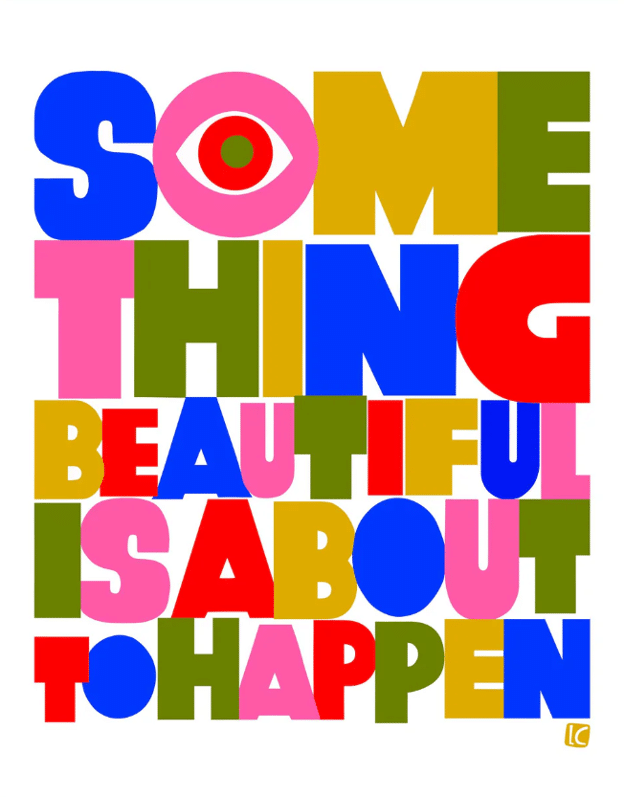
Source: lisacongdon.com
Today’s audiences are bombarded by overproduced, artificial-feeling art on every side. Illustrator Lisa Congdon broke the mold with the handmade trend in the early 2010s. Her organic shapes and imperfect lines helped popularize a return to tactile design. As brands return to authenticity, this kind of handcrafted art has taken commercial illustration by storm. The homegrown vibe is one of 2025’s hottest illustration trends.
Characteristics of Handcrafted and Organic Aesthetics
- Natural textures
- Imperfect lines
- Earthy color palettes
- Analog techniques
Examples of Handcrafted and Organic Aesthetics in Modern Media
- Art: Lisa Congdon’s illustrations
- Branding: Burt’s Bees packaging
- Editorial: Kinfolk magazine visuals
- Home Decor: Anthropologie’s product designs
#9. Neon Noir Aesthetics
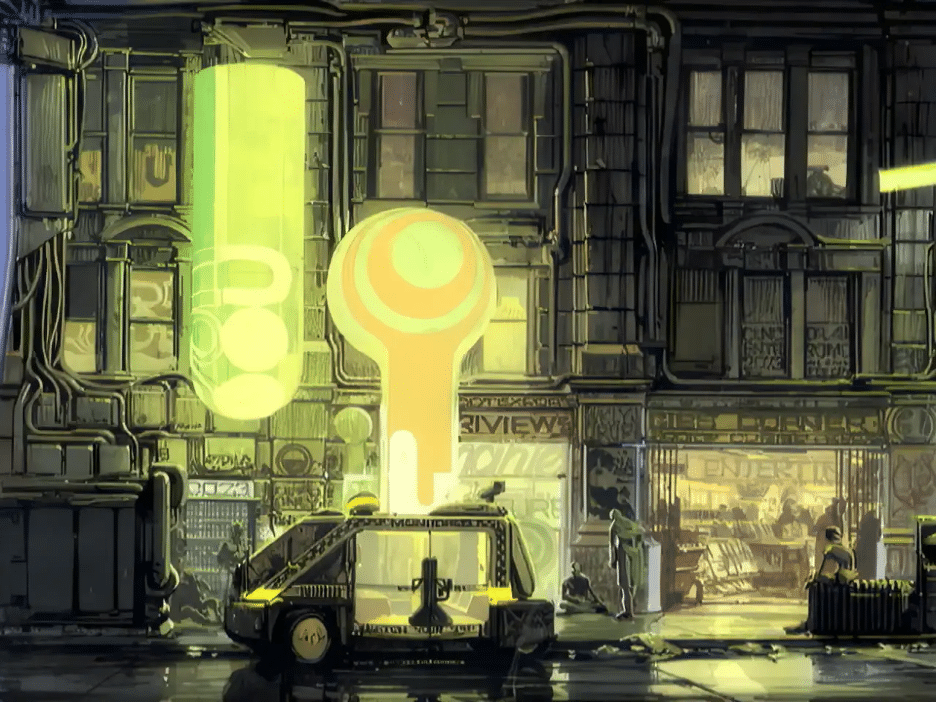
Source: sydmead.com
Cyberpunk visionary Syd Mead laid the foundation for neon noir visuals. But it was films like Blade Runner 2049 that plugged the style into pop culture. Its moody lighting and electric hues are taking over branding and illustration. In 2025, watch for neon noir to shape more than just cyberpunk narratives. Illustrators will use it in music visuals and fashion campaigns.
Characteristics of Neon Noir Aesthetics
- High-contrast lighting
- Electric color schemes
- Futuristic & gritty themes
- Cinematic composition
Examples of Neon Noir Aesthetics in Modern Media
- Film: Blade Runner 2049’s color palette and lighting
- Music Videos: The Weeknd’s After Hours aesthetic
- Fashion: Balenciaga campaigns with cyberpunk influences
- Web Design: Interactive neon-lit branding for tech startups
#10. Maximalist Illustration
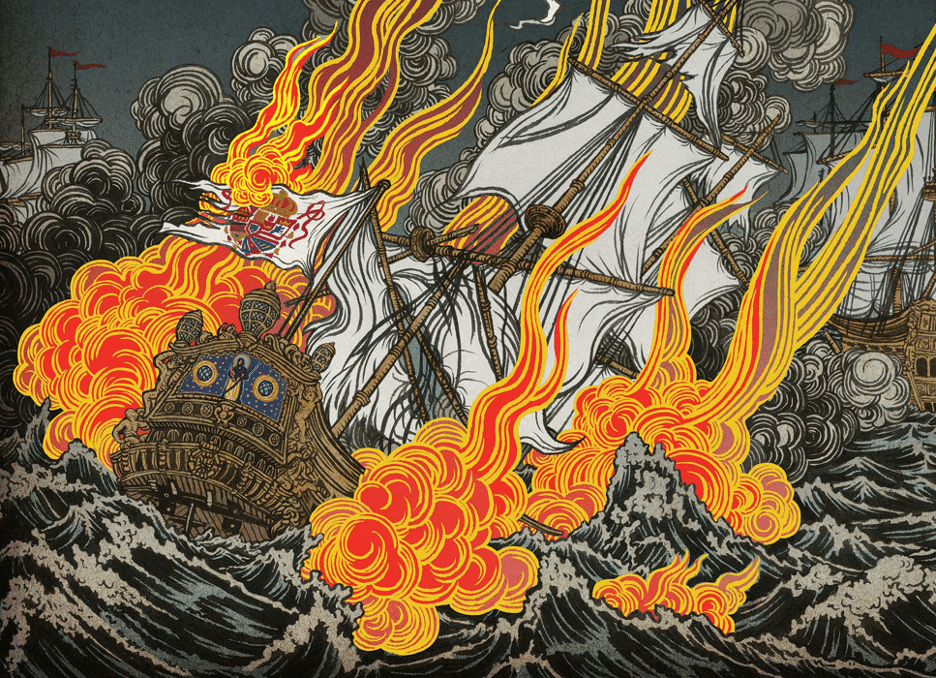
Source: yukoart.com
In stark contrast to the minimalist vibes of Liana Finck or Patagonia, illustrator Yuko Shimizu radiates abundance and complexity. Her vivid work fills every inch of the canvas. Shimizu’s intricate patterns and bold use of color helped popularize maximalist illustration. Her woodblockesque style took off in branding and packaging. With companies and publications looking to stand out, more of them are using maximalism to make a statement. Don’t be surprised if you see plenty of ornate designs in 2025 that draw viewers in and hold their attention.
Characteristics of Maximalist Illustration
- Bold colors
- Intricate patterns
- Ornate compositions
- Eclectic styles
Examples of Maximalist Illustration in Modern Media
- Art: Yuko Shimizu’s illustrations
- Editorial: The New Yorker covers
- Branding: Gucci’s campaign visuals
- Packaging: Absolut Vodka’s limited-edition bottles
#11. Kinetic Typography
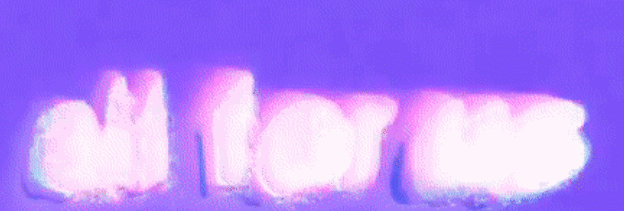
HBO’s “Euphoria” used kinetic typography in its promotional trailers in 2019. The animated text added a layer of emotion. By combining movement with typography, illustrators conveyed the energy and drama of the show’s dynamic style. It soon caught on in social media content and video marketing. With short-form video and animated content dominating digital spaces, kinetic typography is a powerful way to make messages pop. It’s becoming a go-to illustration trend in 2025 for engaging audiences and driving brand recognition.
Characteristics of Kinetic Typography
- Dynamic movement
- Expressive animation
- Bold typography
- Interactive elements
Examples of Kinetic Typography in Modern Media
- Television: HBO’s Euphoria trailers
- Advertising: Nike’s Just Do It campaigns
- Social Media: Spotify’s Wrapped videos
- Film: Opening credits for “Catch Me If You Can”
#12. Minimalist Line Art
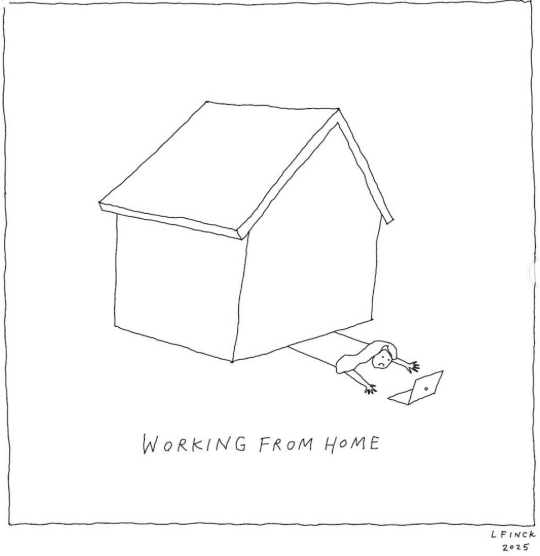
Source: Liana Finck
New Yorker cartoonist Liana Finck’s simple line drawings struck a sharp chord on Instagram in 2013. Her clean lines and spare detail evoke complex emotions in just a few strokes. They’ve helped build minimalist line art into a roaring trend in editorial illustration and branding. In 2025, look to encounter more line art in packaging and branding assets. You’ll also see it everywhere on social media. Its versatility and timeless appeal make it a go-to style for designers looking to cut through the noise.
Characteristics of Minimalist Line Art
- Simple lines
- Abstract elements
- Negative space
- Monochrome palettes
Examples of Minimalist Line Art in Modern Media
- Editorial: New Yorker cartoons
- Branding: Glossier’s packaging
- Home Decor: Society6 prints
- Social Media: Liana Finck’s Instagram
How to Use These Illustration Trends in Your Work
Using cutting-edge illustration trends for 2025 can keep your work fresh. But chasing trends alone won’t build a lasting portfolio. Instead, blend them with your own voice. Staying true to your vision can keep it timeless even as you nod to the new.
When you use Retro-Futurism or handcrafted aesthetics, think about how they support your story. Use AI tools like Midjourney for concepts, but let your talents take over from there. Experiment with 3D elements in branding projects or motion graphics. Capturing attention is not just a trend, but a design essential in 2025.
| Trend | How to Use It |
| Retro-Futurism | Use vintage styles and modern technology in editorial illustrations. |
| Eco-Conscious Imagery | Use natural textures and green tones in branding and packaging. |
| Minimalist Line Art | Work in clean lines that tell a story. |
| Playful 3D Illustrations | Add depth and movement to e-commerce visuals and app designs. |
| AI-Assisted Illustrations | Use AI for ideation. Refine manually to keep the human touch. |
| Maximalist Illustration | Create detailed designs for posters or advertising. |
| Handcrafted and Organic Styles | Use analog techniques like watercolor and ink for an authentic feel. |
| Kinetic Typography | Animate text with motion graphics in videos and social media posts. |
Owning the Future of Illustration in 2025
Ready to add 2025’s illustration trends to your artistic quiver? Sessions College offers flexible, online illustration courses that can help you build your skills. You’ll choose from AI, mixed media, 3D, and other styles along the cutting edge. Each course blends theory with hands-on projects. You’ll apply trends like kinetic typography or handcrafted design to real-world uses. You’ll also get feedback from seasoned illustrators who know what it takes to succeed.
Our programs fit your schedule too, no matter where you live. Study part-time or full-time, and start in any month. Build a portfolio that gets noticed.
If you’re serious about illustration, don’t just follow trends—lead them. Explore illustration classes at Sessions College and start shaping the future of your creative career.

Tom Gerencer writes and edits in the fields of education, design, science, tech, business, healthcare, and the outdoors. He has written over 1,500 high-traffic articles, web pages, and ebooks with more than 70 million readers worldwide. Read more articles by Tom.
ENROLL IN AN ONLINE PROGRAM AT SESSIONS COLLEGE:
